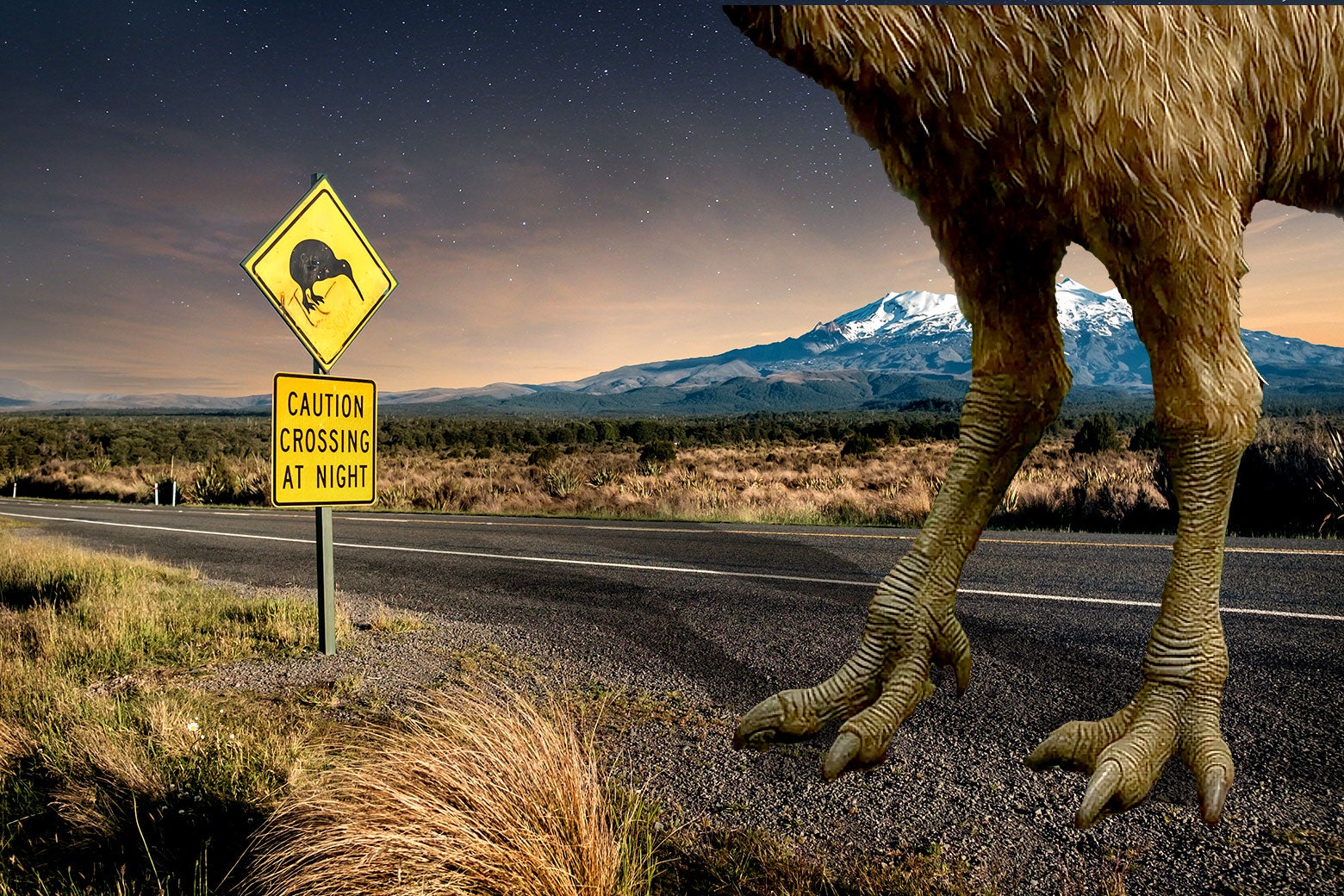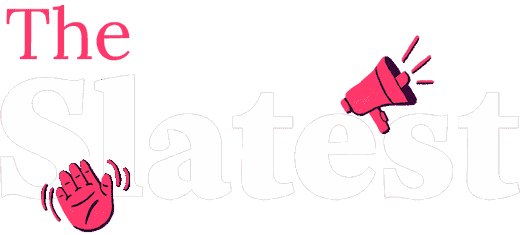The People Who Brought You Those “Dire Wolves” Have a Plan for New Zealand. Uh-Oh.


Sign up for the Slatest to get the most insightful analysis, criticism, and advice out there, delivered to your inbox daily.
New Zealanders are engaged in a daily struggle to protect their isolated islands at the edge of the world. Visitors pass through a biosecurity gantlet at the airport, with specially trained beagles sniffing out such contraband as seeds, fruit, vegetables, meats, or honey. Border agents spray camping gear to kill contaminants. On a larger scale, the government’s Predator Free 2050 campaign aims to eradicate all introduced predators by 2050 to allow native fauna and flora to thrive. As the in-flight Air New Zealand video announces before you land, “This fragile place is all we’ve got. …That’s why we guard it.”
There’s a reason we’re so defensive. Before humans, flightless birds like the kākāpō and kiwi thrived. The only native mammal was a bat. When the Māori arrived 800 years ago, they brought dogs and rats. Then, Europeans made things worse. They imported possums for fur, rabbits to hunt for sport, then ravenous stoats to control the rabbit population. (Stoats look like ferrets and kill not just one bird at a time, but entire nests.) So-called “acclimatization societies” introduced hedgehogs to make New Zealand feel more like Great Britain. Today, the New Zealand Department of Conservation calls the hedgehog “our most underrated predator,” noting that just one of them “can cause an entire colony of endangered black-fronted terns to abandon their nests.”
Together, these imported creatures caused a mass extinction; nearly half of New Zealand’s vertebrate species have disappeared since their arrival on the islands. Predators destroy an estimated 25 million birds, chicks, and eggs a year, while 30 million possums gobble up 21,000 tons of vegetation a night, depleting the food supply for native animals. Today, largely due to non-native animals, New Zealand has one of the highest extinction rates of native species in the world. No wonder the federal government launched Predator Free 2050 in 2016 with an initial investment of $28 million. Since then, the initiative has attracted more funding and passionate participation, from the North Island to the South. While no city is free of predators, more than 100 offshore islands are, and more than 80 eco-sanctuaries protect native ecosystems.
I live in Dunedin, a city on the South Island, and have seen firsthand how effective the war against predators has been. As a journalist and a volunteer, I’ve set and checked traps called “Trapinators” and “Mammalian Corrections Units” with Predator Free Dunedin, a conservation collective that has battled possums, rats, hedgehogs, and stoats since 2018. Since then, more than 6,300 traps have been set in and around the city, and more than 50,000 individual predators have been eliminated. We know these animals are not malevolent, just trying to survive, and so the traps dispatch them with as little suffering as possible. They work: The long finger of the Otago Peninsula, once overrun with possums, is now almost free of them. Native birds such as kererū and tūī are returning to the city. Setting and checking traps, replanting native bush, checking corflute for teeth marks and the ground for scat—it’s muddy and exhausting work, and the road to a predator-free 2050 is long. But we’re winning.
So we should be wary of the shiny offer from Texas-based biotech firm Colossal Biosciences, which announced in July that it intends to “de-extinct” the moa, a gigantic wingless bird that was killed off about 600 years ago. This is the same company that “brought back” the ice-age dire wolf with financial help from Game of Thrones author George R.R. Martin. This project also has a high-profile partner in Sir Peter Jackson, the New Zealand film director behind Lord of the Rings.
In a slick promotional video, Jackson says that “being extinct isn’t really the end of the story.” Various narrators explain that the “nearly mythological” moa inspires the imagination. Its return will be “empowering” and restore “hope” as it supercharges conservation efforts and rehabilitates a vital piece of Māori cultural heritage.
All that from a moa. Except it won’t be a moa. In the case of the allegedly de-extincted “dire wolves,” what Colossal Biosciences actually produced were some gray wolves with 20 gene edits to make them look more like dire wolves. The company’s chief science officer, Beth Shapiro, has explained that they employ the morphological species concept, which basically means: “If they look like this animal, they are this animal.” In other words, if I paint my cat to look like a fox, it is a fox.
But, no, Sir Peter—extinction really is the end of the story. The laboratory “moa,” like the “dire wolf,” would similarly be a hybrid animal, not a clone. Colossal Biosciences would again edit the genes of a close living relative, such as the emu or tinamou, and call it a moa. This will be a new creature, not an animal with native roots in New Zealand. This makes it yet another introduced species like the rat or stoat, with unpredictable behavior.
Colossal Biosciences does not intend to unleash the “moas” into the wild. The “dire wolves” live on a 2,000-acre preserve enclosed with zoo-grade fencing. The flock of genetically engineered birds will be given, in Jackson’s words, “a natural environment as big as we possibly can.” This is in a country the size of Colorado, and will effectively take space away from native species for what amounts to a roadside attraction. Meanwhile, beyond the gates and gawking tourists, stoats will gobble kiwi eggs and possums will devour our rata leaves. Colossal Biosciences insists that what they are doing with their de-extinction projects is conservation. The fake moa effort isn’t conservation at all. At best, it’s a cheap (or, rather, expensive) distraction. I wonder if Colossal Biosciences has considered the possibility of their Frankenbird escaping the enclosure they envision. If an animal the size of a hedgehog can devour our native plants and insects, including the endemic and endangered wētā (a large flightless cricket), imagine what a mixed-gene bird the size of an emu could do as it crashes around the bush.
Colossal Biosciences views Māori people as primary beneficiaries of the moa’s return.Their promotional video shows Māori performing a traditional poi dance and the haka, a ceremonial war dance, as project leaders laud the “complete partnership” between Māori and Colossal Biosciences. Yes, the company is working with the Ngāi Tahu Research Centre, whose 18 researchers and lecturing staff foster Indigenous scholarship. However, Māori as a group constitute almost 18 percent of New Zealand’s population. Do all Māori want the moa to return? Most Māori live in towns or cities, and in communities that often face challenges such as housing deprivation and low life expectancy. Does the moa mean the same thing to them in 2025 that it did 800 years ago, when it was an important source of food and material for making ornaments and tools? Claiming the moa is vital to Māori identity is like saying all Americans have a deep cultural connection to the flat-headed peccary that once roamed the Great Plains.
As we head into our planet’s sixth mass extinction, species nostalgia is understandable. We mourn what’s lost. For some, de-extinction glows like a magic reverse button, a way to skirt tedious conservation efforts, an excuse to ignore the Endangered Species Act (as Secretary of the Interior Doug Burgum, a fan of Colossal Biosciences, has suggested we do), and relax. But we can’t get back to the garden. The best we can do is try to keep what we’ve got, even if that means the unglamorous work of setting and checking traps, planting native bush, and requiring extra steps at the airport to make sure no one’s smuggling in an unwanted creature.
 Sign up for Slate's evening newsletter.
Sign up for Slate's evening newsletter. Slate





